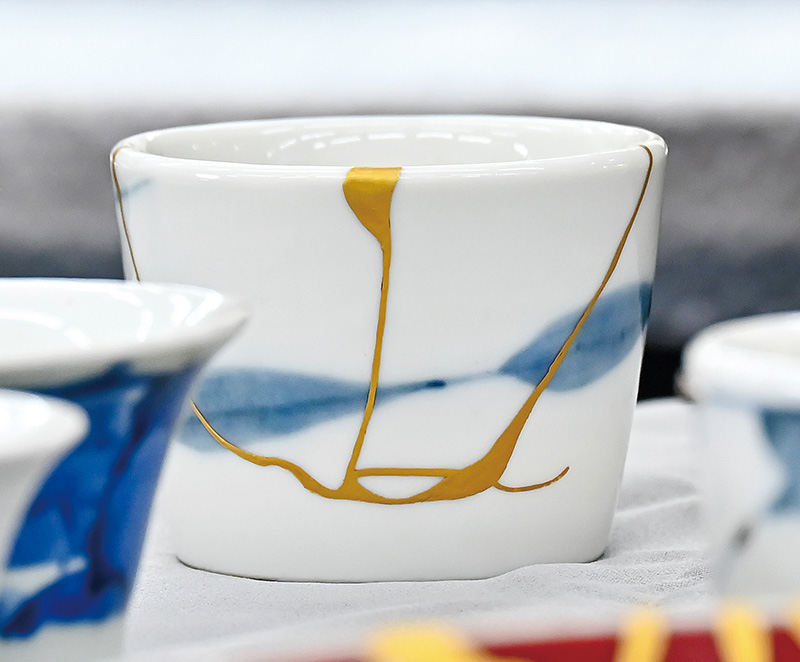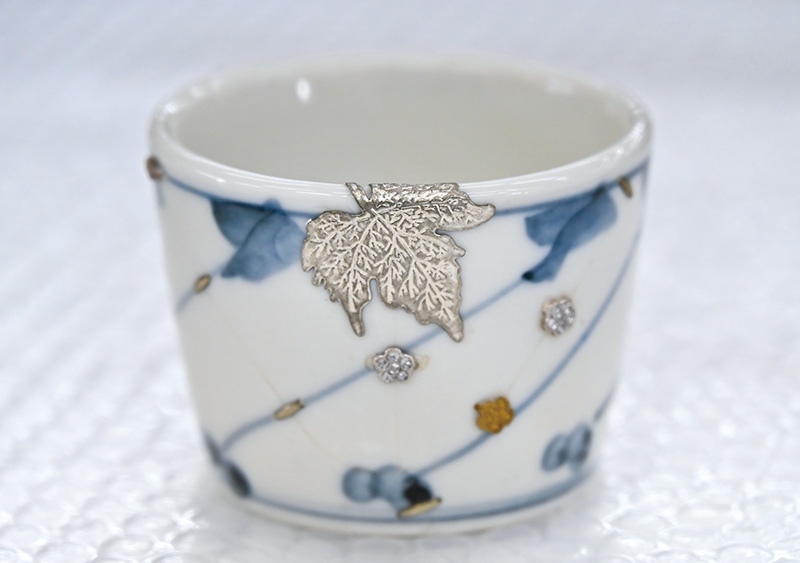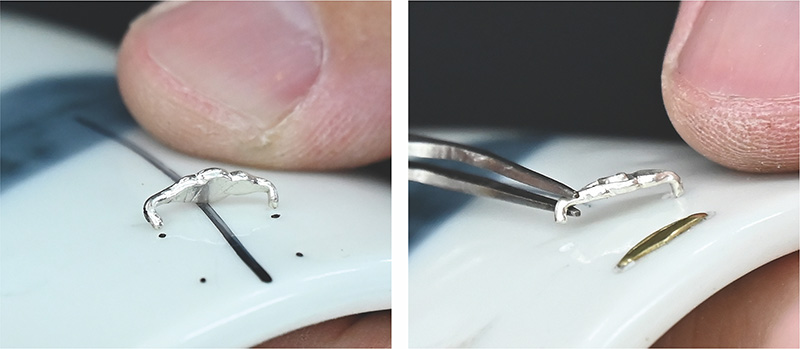發布日期:2025-04-21更新日期:2025-04-21
Rebirth in Imperfection: The Art of Kintsukuroi and Curium Porcelain Ceramic Restoration
“Curium porcelain (ceramic riveting) (鋦瓷)” and “kintsukuroi (金繕)” are traditional methods of ceramic restoration, each rooted in distinct cultural contexts but sharing a common reverence for the value of objects.

Chinese ceramics are known for their dense texture and rigidity. They are repaired using metal staples to reinforce damaged areas, a technique referred to as curium porcelain. This practice originated during the Ming and Cing dynasties when ordinary people often repaired ceramics with iron pieces, while the nobility used gold or silver. The process of restoration then evolved into a distinguished decorative art form, revitalizing broken vessels and endowing them with renewed significance and aesthetic value.

Japanese ceramics exhibit a greater porosity and delicacy, which renders traditional staple-based repairs impractical, as such methods could compromise the fragile structure. Consequently, artisans developed an innovative solution by bonding fractured pieces with natural lacquer, subsequently embellishing the seams with gold, silver, or tin powder. The innovative technique laid the foundation for what is now celebrated as kintsugi (kintsukuroi). During Japan's Edo period, renowned ceramic artist Hon'ami Kōetsu (本阿彌光悅) elevated the art of repair by using gold lacquer to mend his own creations. Through his expertise, he created an art form that celebrated the beauty of imperfection in restored objects.

In today's world, where ceramic wares are often affordable and disposable, traditional restoration techniques such as curium porcelain and kintsukuroi are gradually disappearing. However, Lai Wun-jin (賴文進), a ceramic restoration expert at Cheng Shiu University's Conservation and Research Center (正修科技大學文物修護研究中心), is working tirelessly to preserve and promote these ancient crafts. Through his dedication to hands-on restoration and teaching, he emphasizes the deep emotional value of repairing items that hold personal significance. His efforts inspire hope for the survival and appreciation of these beautiful traditions.

With practiced precision, Lai expertly demonstrates the steps of the restoration process while reflecting on his early experiences. He learned that true artistry lies in embracing the organic flow of the fractures, letting the lines naturally trace their own unique paths. This revelation that imperfection can be beautiful inspires a deep appreciation for the art form and the resilience of the artisans who practice it.
Lai hopes to preserve this age-old art form and to continue to pass on this cultural craft, which celebrates the profound and unique beauty of imperfection.
